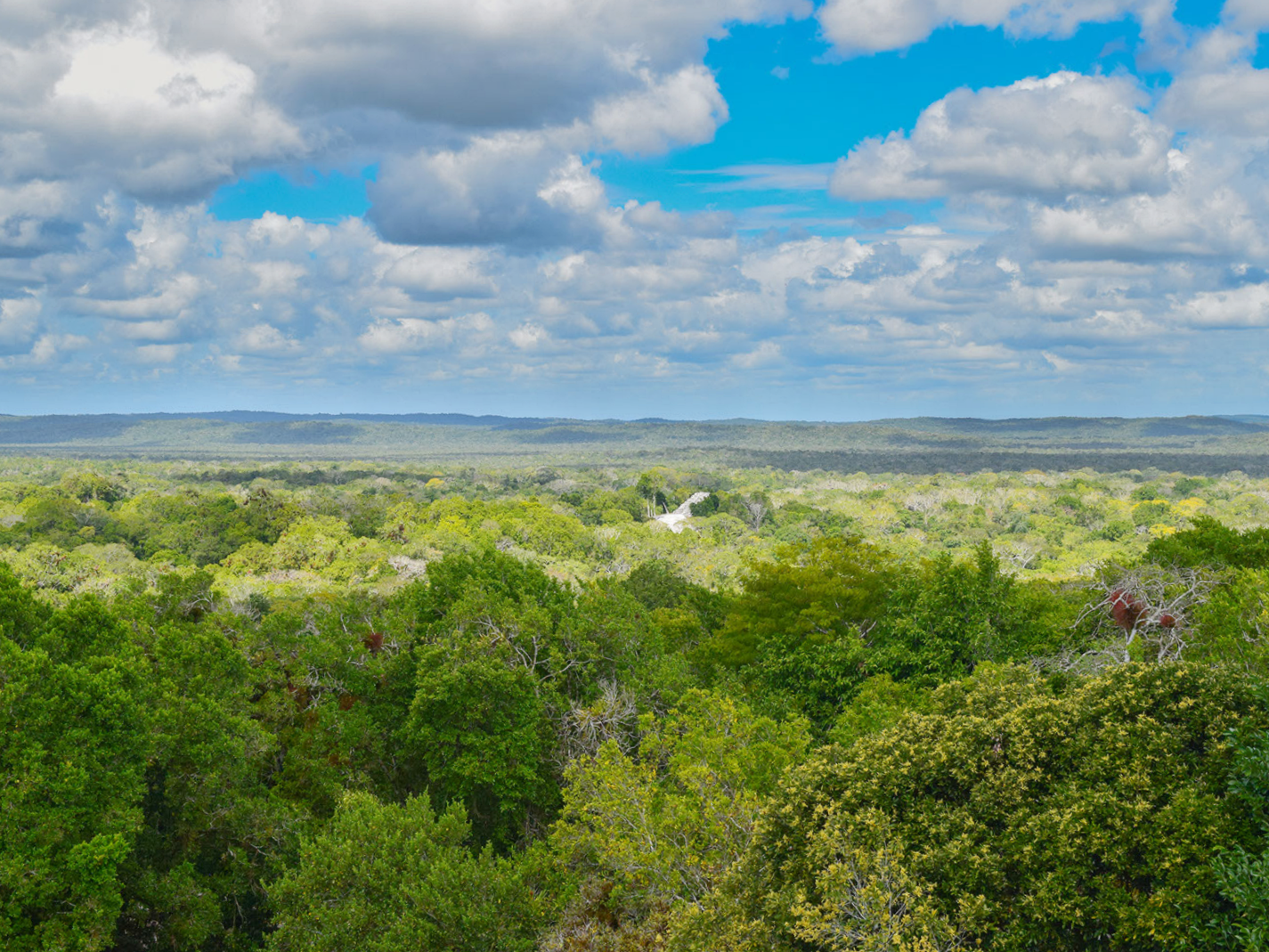
On the evening of April 23, 2023, a fight broke out in Los Angeles. The masked mob threw chairs, shouted swear words, stole a laptop, and landed a few punches. The cops were called, and, eventually, the chaos subsided. One person was arrested for assault, and one victim ended up with a bloody nose. This may not seem newsworthy, until you learn that it occurred at the LA Times Festival of Books.
The protestors were trying—and one could say they succeeded—to silence Dr. Richard Hansen, an archaeologist who has spent over four decades excavating, researching, and writing about El Mirador, a Mayan site in the Petén region of northern Guatemala. El Mirador dates from about 1,000 BC to AD 150, and it contains hundreds of structures, including La Danta—one of the largest pyramids in the world, which stands over 236 feet high.
As explained in a 2011 Smithsonian Magazine article, it was Richard Hansen who discovered the site’s antiquity, along with the complex artifacts and structures that were once thought to occur only much later in Mayan societies. Early Mayans were thought to have been more like egalitarian hunter-gatherers than hierarchical agriculturalists. Hansen’s discoveries rewrote Mayan history and placed El Mirador as the cradle of Mayan civilization. His recent use of LiDAR (Light Detection and Ranging) laser technology has allowed him to map the entire Mirador-Calakmul Basin, which includes over 775 ancient Mayan sites.
The protestors, calling Hansen a colonialist and an imperialist, are trying to thwart his efforts to get Bill S.3131, the Mirador-Calakmul Basin Maya Security and Conservation Partnership Act of 2019, passed. The bill would provide 72 million US dollars to the region and enable a joint US–Guatemalan effort to bring sustainable tourism, a small passenger train, and greater conservation—of both biodiversity and archaeological sites—to the area. After all, the Mirador-Calakmul Basin is home to a diverse group of animals, including jaguars, coati, and various reptiles. With Hansen’s help, researchers at the Universidad del Valle in Guatemala City discovered 27 different species of moths and butterflies that are found only in this region.
[Related: “The State of the University: An Anthropologist’s Perspective”]
Currently, the region is served by a forestry concession system, in which there is a contract between the landowner (which can be the government) and other parties that are permitted to use the forest. In the Maya Biosphere Reserve, where El Mirador is located, the concession contract allows locals from the nearby village of Carmelita to use the land. It also provides them with jobs, such as guarding the area against illegal logging and drug trafficking. The concession contract is set to expire in 2024, after having been in place since 1995. It has successfully protected some resources; however, there is still much drug trafficking (in part due to the lack of authority from the local management of the concession enterprises). And the contract never focused on the scientific merits of conserving archaeological sites; instead, it focused on maintaining the local population’s access to the forest so that they can earn some money and continue their traditional lifestyles.
Hansen’s proposal emphasizes an investment in scientific endeavors, with a focus on archaeology and biodiversity. He suggests that this would bring greater prosperity to the surrounding villages. Plus, increased security would seriously curtail looting and other crimes, such as human trafficking, drug trafficking, and illegal logging. Hansen notes that, with a safer region and a small train to bring tourists to the sites, the area would thrive.
Richard Hansen has a history of employing local villagers for jobs at the field sites. Hansen’s team includes up to 400 local men and over 60 student researchers from institutions around the world. He even converted some looters into guards—convincing them of the value of the materials and providing honest employment. Furthermore, Hansen provides literacy lessons to those interested and computer lessons to juveniles (including with free computers). In his scholarly works, Richard Hansen often co-authors with archaeologists from nearby universities. In many ways, his efforts are considered best practices by archeological associations: employ local people, provide resources, and try to save the environment!
So, why are activists trying to stop Hansen? I think their opposition is due to two factors. The first is his move away from a locally controlled forest concession system that supports traditional lifestyles for villagers, even if progress would improve their quality of life. For instance, in this area, the scarcity of clean drinking water led Hansen, through his Foundation for Anthropological Research and Environmental Studies, to collaborate with Eco-Filters de Guatemala to distribute 185 water filters to the local villages, including Carmelita, Uaxactun, and Cruce de las Dos Aguadas. The project included training locals on how to use the filters and teaching them about hygiene to improve indigenous populations’ health. This is not to imply that the forest concession system is a completely in-house endeavor, and it certainly was never self-sustaining. From 1990 to 2000, the forest concession enterprises received 150 million US dollars from the international community. One of the biggest donors was USAID: the United States Agency for International Development.
[Related: “Anthropology in Ruins”]
The other, perhaps more subtle, reason for this attack on Richard Hansen is the conclusions he comes to in his scholarly work. Hansen has been a vocal critic of portraying Mayans as peaceful environmentalists. In 2017, he was quoted in the Washington Examiner as having said: “In the liberal mentality of our liberal colleagues, the Maya were star-gazing, poetry-reciting, peace-loving people in harmony with their forests.” He calls this a “crock,” and then notes that the Mayans “had all the virtues and vices of contemporary society.” Hansen has found archaeological evidence that Mayan civilization, or at least this site, collapsed in part due to over-exploiting the environment.
Furthermore, whereas activist archaeologists and indigenous activists have argued that tales of human sacrifice are just myths perpetuated by Spanish Catholic colonialists to justify conquering indigenous civilizations, Hansen has found evidence that the Spaniards’ accounts were true. The Mayans did engage in human sacrifice; they also engaged in slavery. Even the most marvelous of structures, those giant pyramids, were built with forced labor. Richard Hansen, with more than forty years of work on El Mirador, has attempted to accurately portray the past rather than paint a false picture of an egalitarian, pre-European paradise. He has refused to kowtow to the postmodern view that there is no such thing as truth, and that the indigenous peoples were, and still are, far superior to Europeans.
Regardless of one’s view on Bill S.3131, the protestors’ tactics showed their disdain for free speech, their propensity for violence, and their opposition to scientific inquiry. They also are unwilling to accept progress, clinging to a false narrative that indigenous ways of life are best—even when these ways lead to ruin.
Image: Adobe Stock

Just under the surface of these recent attacks by self-proclaimed decedents of long gone cultures you will find the predictable and banal human traits of greed and lust for power. I’m confident that people living in 2023 don’t wake up writhing in emotional agony because someone has done research on people who lived 1,000 years ago. It is a contrived and calculated phony grievance designed to give those protesting an excuse to demand money, land and power. It’s victimhood by design.